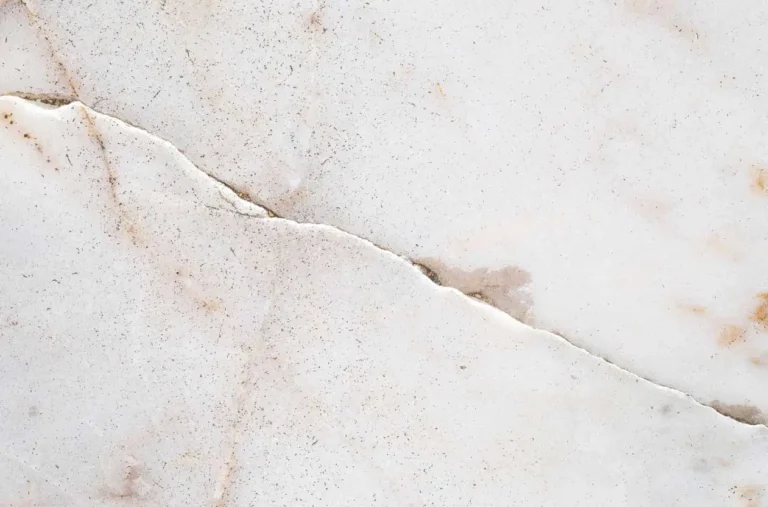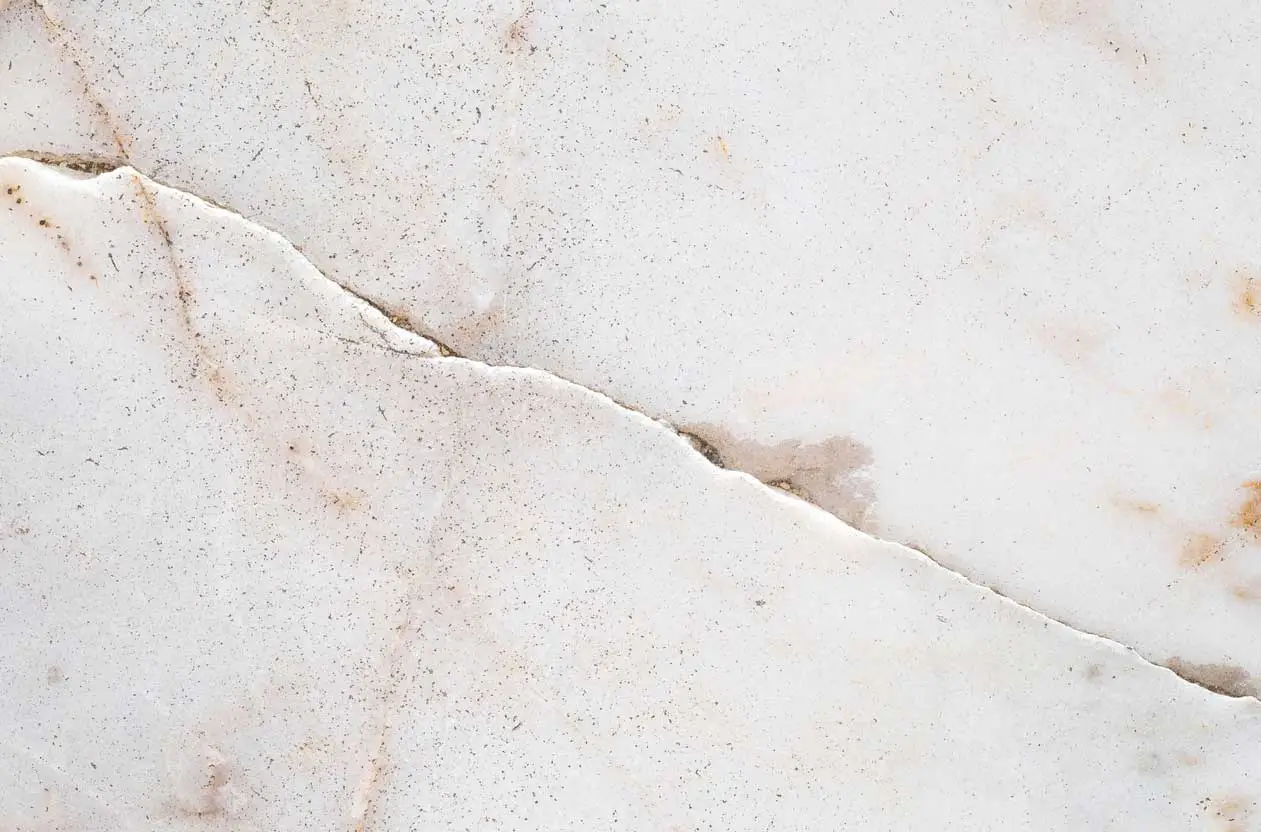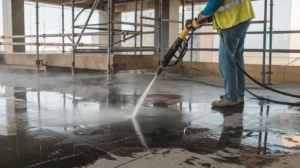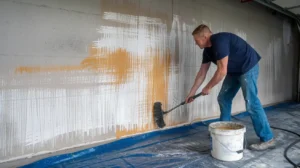Marble crack repair is a specialized process aimed at addressing damages to marble surfaces, particularly cracks that may compromise both the aesthetics and structural integrity of the material. Understanding the nuances of marble crack repair is crucial for homeowners, architects, and restoration professionals alike.
The importance of addressing marble cracks promptly cannot be overstated, as neglecting them may lead to further deterioration and potentially costly repairs down the line.
Understanding Marble Cracks
Why Do Marble Cracks Occur?
Natural Causes:
Marble is formed through natural processes involving heat and pressure, leading to the presence of inherent weaknesses like veins and fissures. These natural imperfections can develop into cracks over time due to environmental factors such as temperature changes and geological shifts.
Structural Stress:
Marble can crack due to external forces exerted upon it, such as heavy loads, seismic activity, or improper installation. These stresses can exceed the marble’s tensile strength, causing it to fracture.
Wear and Tear:
Continuous use, abrasion, and exposure to harsh chemicals or acidic substances can weaken the structure of marble, making it more prone to cracking.
Impact of Marble Cracks on Aesthetics and Structure:
Aesthetically, cracks in marble diminish its beauty and elegance, detracting from its overall appearance. Structurally, cracks can compromise the integrity of marble surfaces, leading to further deterioration and potentially posing safety hazards if left unaddressed.
Signs of Marble Cracks:
Visible cracks:
These can range from small hairline fractures to larger fissures that are readily apparent on the surface of the marble.
Discoloration or staining along cracks:
This can indicate the presence of moisture or foreign substances within the cracks, further weakening the marble.
Changes in texture or sound:
Cracked marble may exhibit variations in texture or produce hollow sounds when tapped, suggesting underlying fissures or fractures.
Marble Crack Repair Methods

Traditional Repair Techniques
Filling with Grout or Sealant: This involves filling the crack with a grout or sealant material to mask the imperfection and prevent further damage.
Polishing and Buffing: Polishing and buffing the surface of the marble can help minimize the appearance of cracks by smoothing out rough edges and blending them with the surrounding area.
Modern Solutions: Marble Crack Repair Epoxy
Introduction to Epoxy Repair: Marble crack repair epoxy is a modern solution that involves using epoxy resin to fill and seal cracks in marble surfaces. Epoxy is a durable and long-lasting material that can effectively bond with the marble, providing a seamless repair.
Advantages Over Traditional Methods: Epoxy repair offers several advantages over traditional techniques, including enhanced durability, better aesthetic results, and the ability to withstand high levels of wear and tear.
Step-by-Step Guide to Using Marble Crack Repair Epoxy
Preparation of the Crack: Begin by cleaning the crack thoroughly to remove any dirt, debris, or loose particles. Use a brush or compressed air to ensure the crack is free from contaminants.
Application of Epoxy: Mix the epoxy resin according to the manufacturer’s instructions. Apply the epoxy generously to the crack using a putty knife or similar tool, ensuring it fills the entire depth of the crack.
Curing and Finishing Touches: Allow the epoxy to cure according to the recommended time frame provided by the manufacturer. Once cured, use fine-grit sandpaper to smooth out any excess epoxy and blend it with the surrounding marble surface. Finally, polish the repaired area to restore its shine and finish. If you want professional guidance then Stone Sealer Restoration is best in business.
DIY vs Professional Marble Crack Repair
Factors to Consider Before Choosing DIY Repair
Skill Level and Experience:
- Assess your own proficiency in handling repair tasks. Marble crack repair requires precision and knowledge of appropriate materials and techniques.
- Consider your previous experience with similar DIY projects. Lack of experience might lead to improper repairs, worsening the crack, or damaging the marble surface further.
Severity of the Crack:
- Evaluate the extent and depth of the crack. Minor surface cracks may be manageable for DIY repair, while larger or deeper cracks might require professional intervention.
- Understand the implications of the crack on the structural integrity of the marble. Severe cracks could indicate underlying issues that might need professional assessment.
Benefits of Hiring Professional Services
Expertise and Equipment:
- Professionals possess specialized knowledge and training in marble repair techniques. They understand the intricacies of different types of marble and the appropriate methods for repair.
- Professional marble repair services are equipped with specialized tools and materials not typically available to DIY enthusiasts. This ensures a higher quality repair and minimizes the risk of further damage.
Long-Term Durability and Quality Assurance:
- Professionals can provide assurances regarding the longevity and durability of the repair. They use high-quality materials and techniques to ensure the integrity of the marble surface over time.
- Hiring a professional service often comes with warranties or guarantees, providing peace of mind that any issues arising from the repair will be addressed promptly and effectively.
Cost Considerations
Factors Affecting Marble Crack Repair Costs
Size and Depth of the Crack: Larger and deeper cracks typically require more material and labor to repair.
Type of Repair Method Chosen: Different methods, such as epoxy injection, resin filling, or polishing, vary in cost.
Professional Labor Costs: Skilled labor required for marble repair contributes significantly to the overall cost.
Estimated Costs for Different Repair Options
- Minor crack filling: $100 – $300
- Epoxy injection for larger cracks: $200 – $600
- Resin filling for cosmetic repairs: $150 – $400
- Polishing and refinishing: $300 – $800
Conclusion
Timely marble crack repair is paramount for maintaining the integrity and aesthetic appeal of marble surfaces. Firstly, addressing cracks promptly prevents them from worsening over time, which could lead to structural issues and further damage.
Secondly, repairing cracks in a timely manner helps preserve the beauty and elegance of marble, ensuring that its natural allure remains intact. Feel free to contact us for any type of query or services related to marble repair.
FAQs
What Causes Cracks In Marble?
Cracks in marble can be caused by various factors including natural wear and tear, improper installation, structural shifts, and impact damage.
How Do I Know If My Marble Needs Crack Repair?
Look out for visible cracks, chips, or fissures on the surface of your marble. Additionally, if you notice any changes in the texture or color of the marble, it may indicate underlying cracks that need attention.
Can Cracks In Marble Be Repaired?
Yes, cracks in marble can be repaired using specialized techniques such as epoxy injection, filling with resin or acrylic, or honing and polishing to blend the crack seamlessly with the surrounding surface.
Is It Necessary To Repair Cracks In Marble Immediately?
It is highly recommended to repair cracks in marble as soon as possible to prevent them from worsening and causing further damage to the surface. Prompt repair also helps maintain the structural integrity and aesthetic appeal of the marble.
How Long Does Marble Crack Repair Take?
The duration of marble crack repair depends on the extent of damage and the chosen repair method. Minor cracks may be repaired quickly, while more extensive damage may require additional time for thorough restoration.
Will The Repaired Cracks Be Noticeable?
With professional repair techniques and skilled craftsmanship, repaired cracks in marble can be virtually indistinguishable from the surrounding surface, ensuring a seamless finish.





